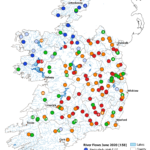The Hydrology Bulletin for August is now on the EPA…
Hydrology Summary Bulletin – August 2022
August was an exceptionally dry month this year. Right across the country very low water levels and flows were seen clearly in our surface and ground waters. The monthly hydrology bulletin outlines the flows in rivers, rainfall, lake and turlough levels, groundwater levels and spring outflows of over 300 stations across Ireland during August.
Overview
During August rainfall was below average everywhere and it was lowest in the midlands, south and east. Average river flows for August fell at 91% of flow monitoring stations compared to average flows observed for July. 86% of river monitoring stations observed monthly average river flows that were either ‘below normal’ or ‘particularly low’ for August, with the latter corresponding to areas of lowest rainfall. Average lake levels fell at 90% of monitored lakes with 74% of lake level monitoring stations either ‘below normal’ or ‘particularly low’ for this time of year.
For groundwater, almost half (46%) of monitoring stations had groundwater levels that were ‘particularly low’ for the month of August. A further 38% of groundwater monitoring stations had ‘below normal’ levels for August. Similarly, most monitored spring outflows were ‘below normal’ or ‘particularly low’ for this time of year.
Rainfall
All monthly rainfall totals across the country were below their 1981-2010 Long-Term Average (LTA). Percentage of monthly rainfall values ranged from 14% (the month’s lowest monthly rainfall total of 12.0 mm) at Roche’s Point, Co Cork (its driest August on record (length 18 years)) to 79% (the month’s highest monthly rainfall total of 104.1 mm) at Newport, Co Mayo. The month’s wettest day was also recorded at Newport, Co Mayo with 47.5 mm on Monday 1st. The number of rain days ranged from 9 days at Phoenix Park, Co Dublin to 19 days at both Malin Head, Co Donegal and Knock Airport, Co Mayo. The number of wet days ranged from 4 days at Phoenix Park, Co Dublin to 11 days at a few stations. The number of very wet days ranged from zero days at Phoenix Park, Co Dublin to 3 days at a few stations.
Two stations had dry spells between 3rd and 19th August. These were Roches Point, Co Cork lasting 15 days and Dunsany, Co Meath lasting 17 days. It was the driest August since 1995 at Markree, Co Sligo; Dunsany, Co Meath; and Cork Airport, Co Cork. It was the driest August since 2003 at Phoenix Park, Co Dublin; Mullingar, Co Westmeath; Malin Head, Co Donegal; and Casement, Co Dublin.
River flows
Average river flows for August fell at 91% monitoring stations compared to average flows observed in July. River flows were classed mainly in the ‘below normal’ and ‘particularly low’ range with ‘particularly low’ flows observed in the midlands, south and east of the country. Analysis of monthly average flows at 161 river monitoring sites across the country identified; 23 (14%) as ‘normal’, 71 (44%) as ‘below normal’ and 67 (42%) were classed as ‘particularly low’ for this time of year.
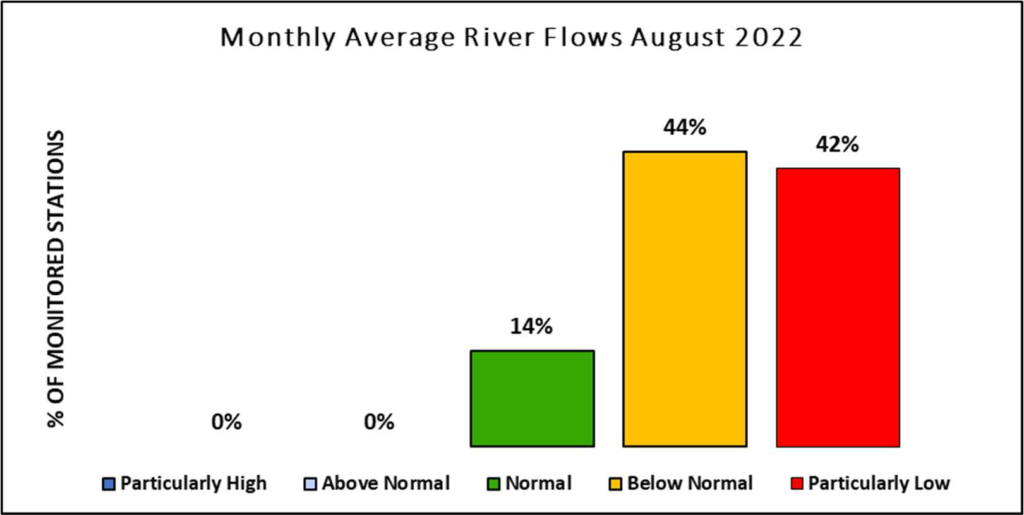
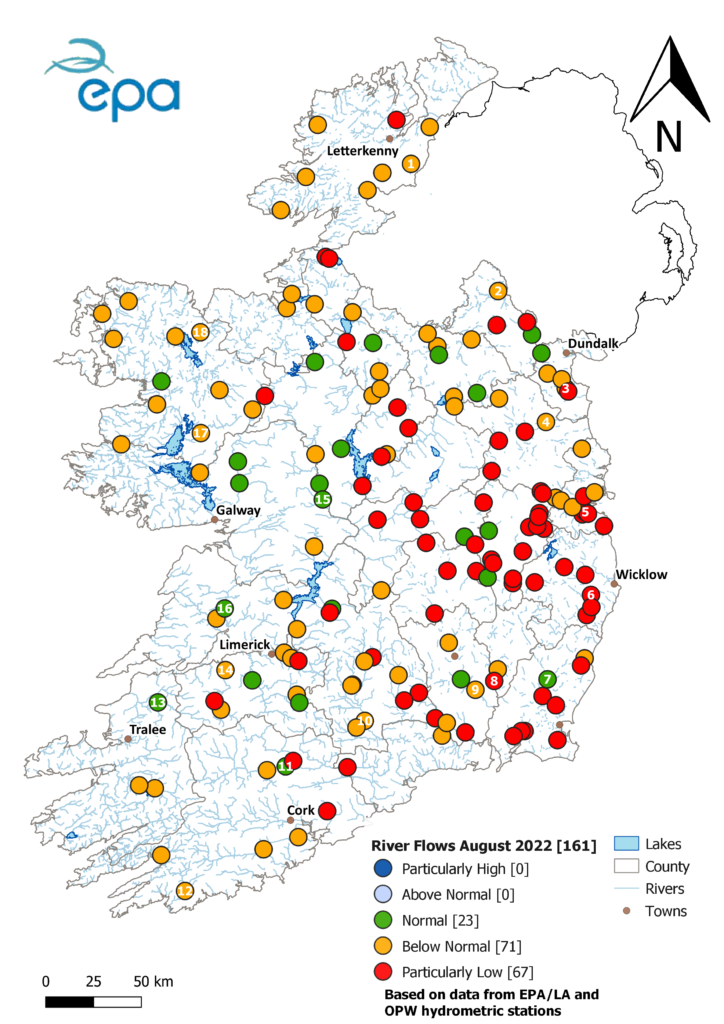
long-term values of monthly flow. Numbered sites are represented in the hydrographs below. All data are provisional and may be
subject to revision (Source: EPA, OPW).
Lake and Turlough Levels
Average water levels for August fell at 90% of monitored lakes compared to average levels for July. Analysis of monthly average levels at 39 lakes and 4 turloughs were classified as ‘above normal’ at 1 (2%) [L. Eske, Co. Donegal], ‘normal’ at 10 (23%), ‘below normal’ at 19 (44%) and ‘particularly low’ at 13 (30%) of monitoring locations for the month of August.
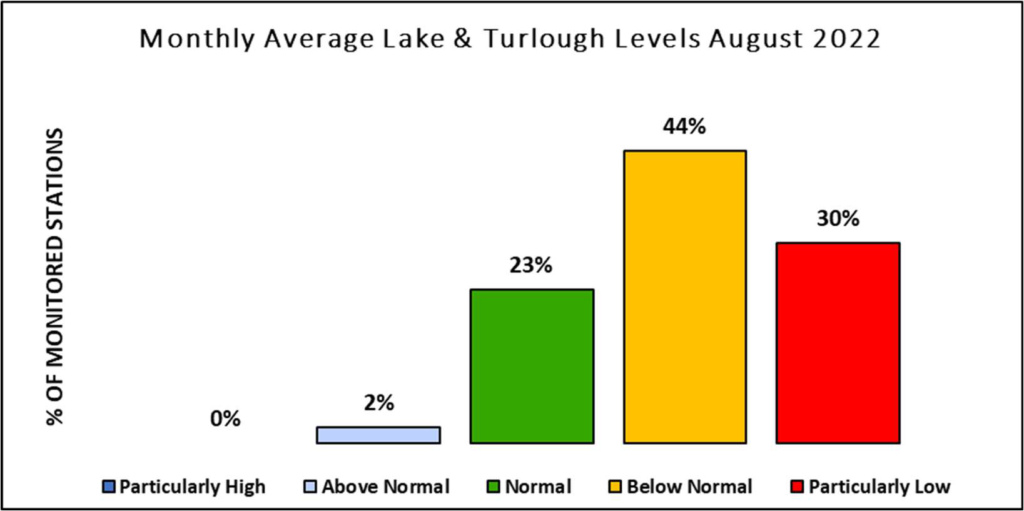
Groundwater Levels and Spring Flows
Average groundwater levels in August decreased at 84% of monitoring wells compared to average levels observed in July. August groundwater levels were classified as ‘above normal’ at 1 (3%) [CLBH9, Co. Offaly], ‘normal’ at 5 (13%), ‘below normal’ at 15 (38%) and ‘particularly low’ at 18 (46%) at a selection of monitoring wells across the country.
Spring outflows were also monitored at 7 EPA monitoring sites for August. The outflows from these springs were compared to previously recorded flows for August, and were ‘normal’ at 1, ‘below normal’ at 4 and ‘particularly low’ at 2 monitoring locations for this time of year.
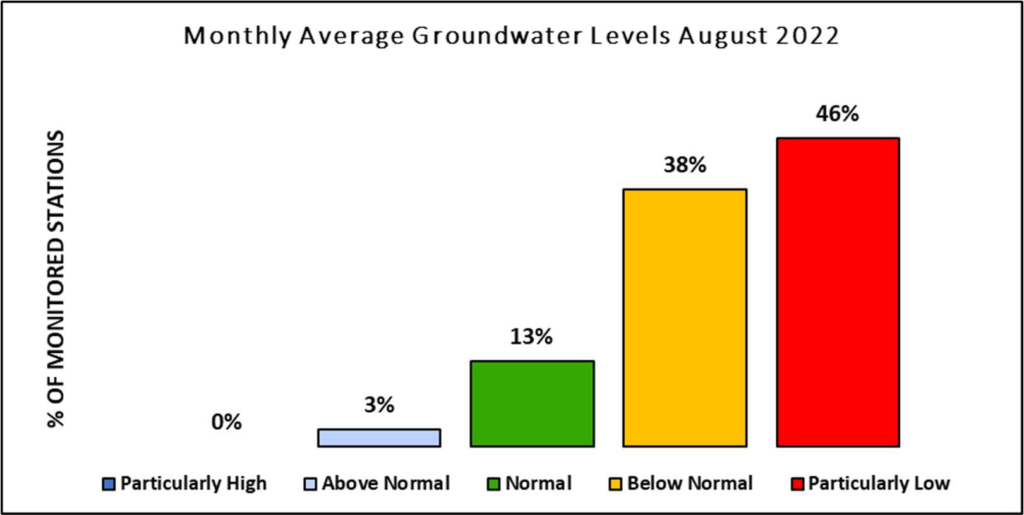
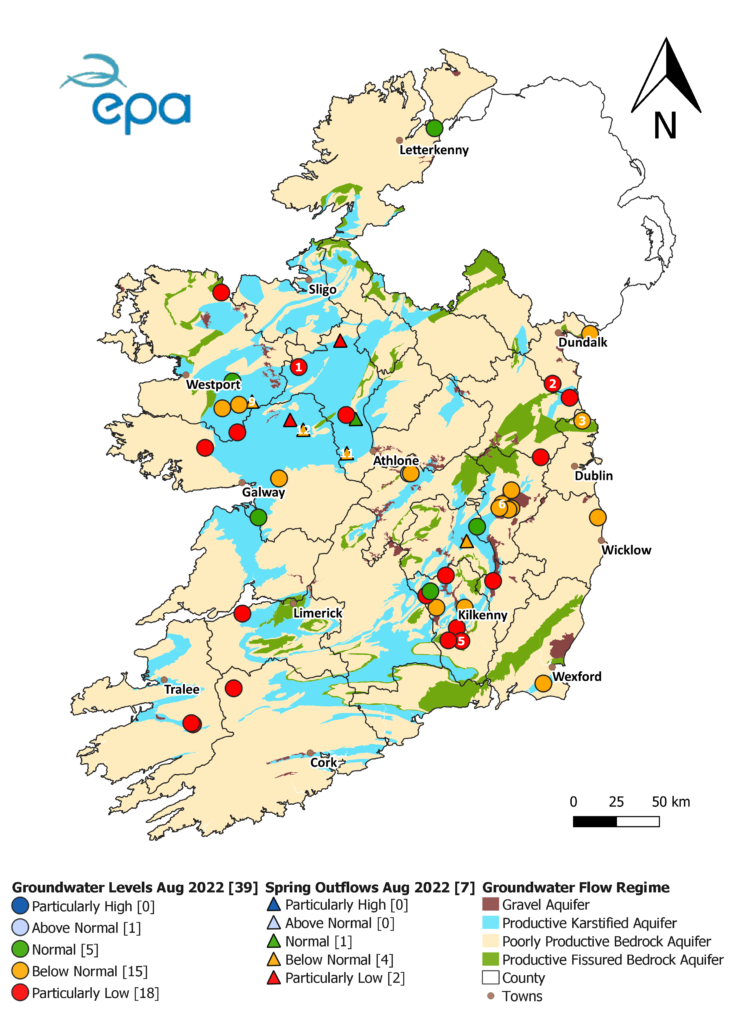
are represented in the hydrographs below. All data are provisional and may be subject to revision (Source: EPA).



